

Josh Nevett
CarExpert's top five large SUV reviews of 2025
3 Days Ago
Mitusbishi is adamant the Outlander PHEV is able to do more than just potter around the city on electric power.
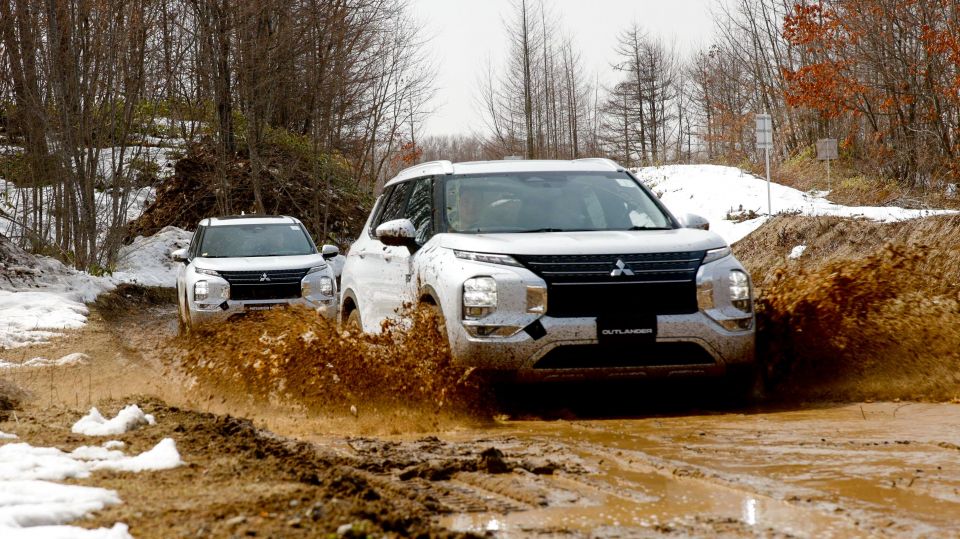
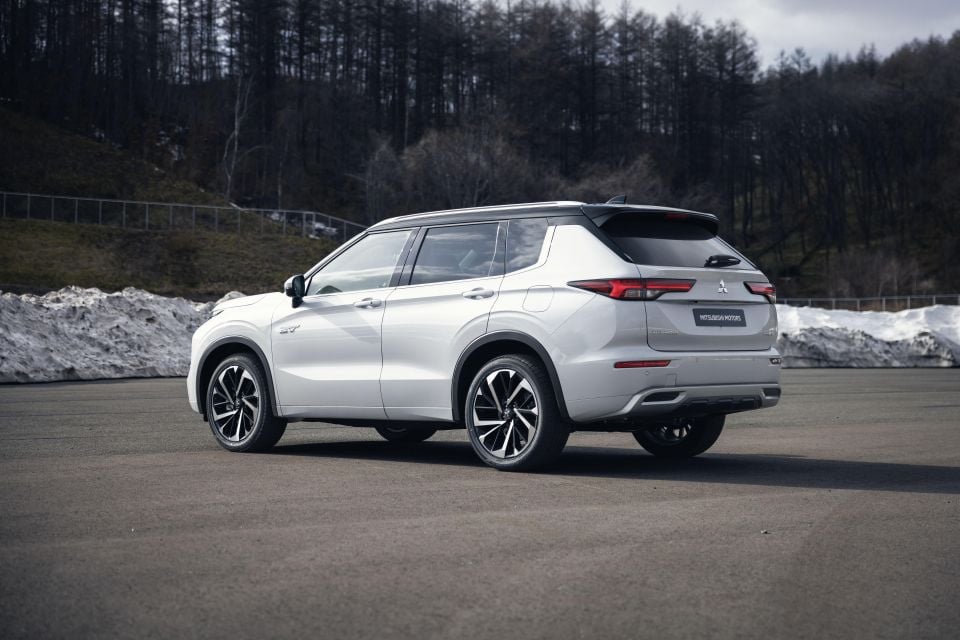

Quickly see how this car stacks up against its competition. Select any benchmark to see more details.
Where expert car reviews meet expert car buying – CarExpert gives you trusted advice, personalised service and real savings on your next new car.
As parts of the motoring world look to jump straight from petrol to battery-electric power, Mitsubishi is working hard to perfect what it thinks is the best of both worlds.

The Outlander Plug-In Hybrid EV (PHEV) combines a petrol engine with a pair of electric motors, fed by a 20.0kWh lithium-ion battery pack, for a claimed 84km of electric-only driving.
When the batteries go flat, the petrol engine can be used to drive the wheels or to charge the battery pack, allowing for a much longer range than a conventional electric car.
Mitsubishi says its plug-in hybrid tech is good for more than just efficiency.
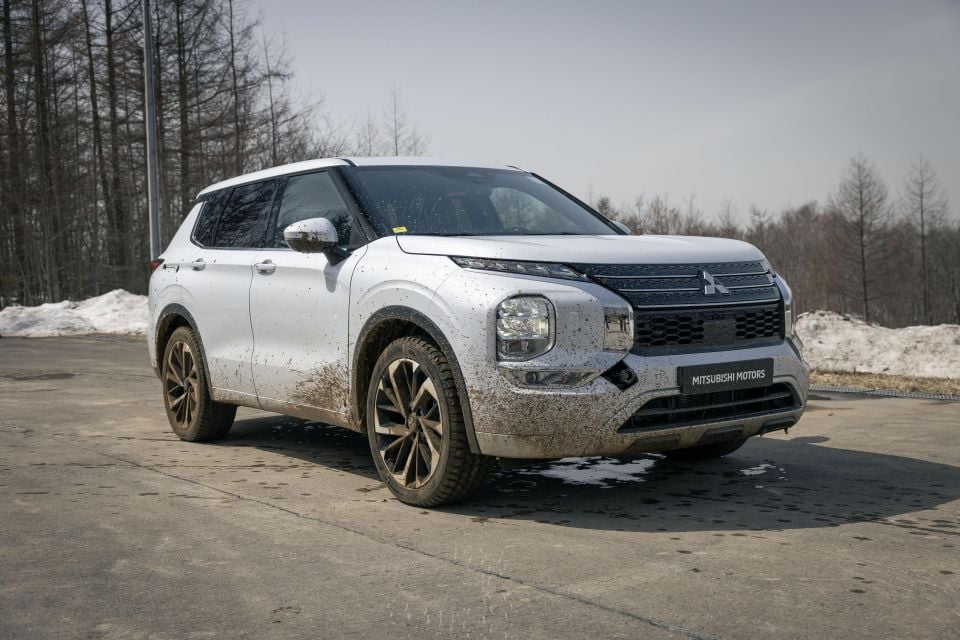
The two electric motors in the Outlander allow for a version what the brand calls Super All-Wheel Control (S-AWC), which can shuffle torque around and brake individual wheels to make what’s a big, heavy SUV feel more agile, or to make it a more capable off-roader.
To show off exactly what the Outlander PHEV can do, Mitsubishi laid out a set of demonstrations at its Tokachi proving ground in northern Japan.
Pricing for the Outlander plug-in kicks off at $55,490 before on-road costs, and extends to $69,990 plus on-roads for the flagship Exceed Tourer with seven seats.
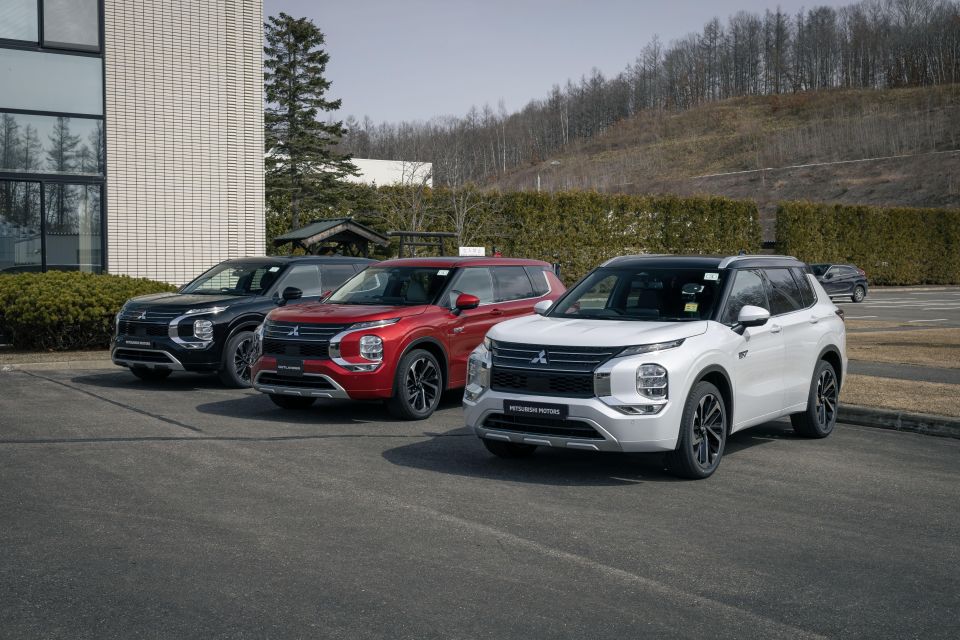
That entry price is $2000 more expensive than the range-topping petrol Outlander, while at the top end the PHEV Exceed Tourer 7-Seat is a whopping $16,000 pricier than its petrol equivalent.
Mitsubishi is one of very few brands bothering with plug-in hybrid technology in Australia. Ford offers the Escape ST-Line PHEV from $54,940 before on-roads, while Cupra offers the smaller Formentor VZe plug-in from $65,990 drive-away.
There’s also the Peugeot 3008 PHEV, which is priced from $84,790 before on-roads.
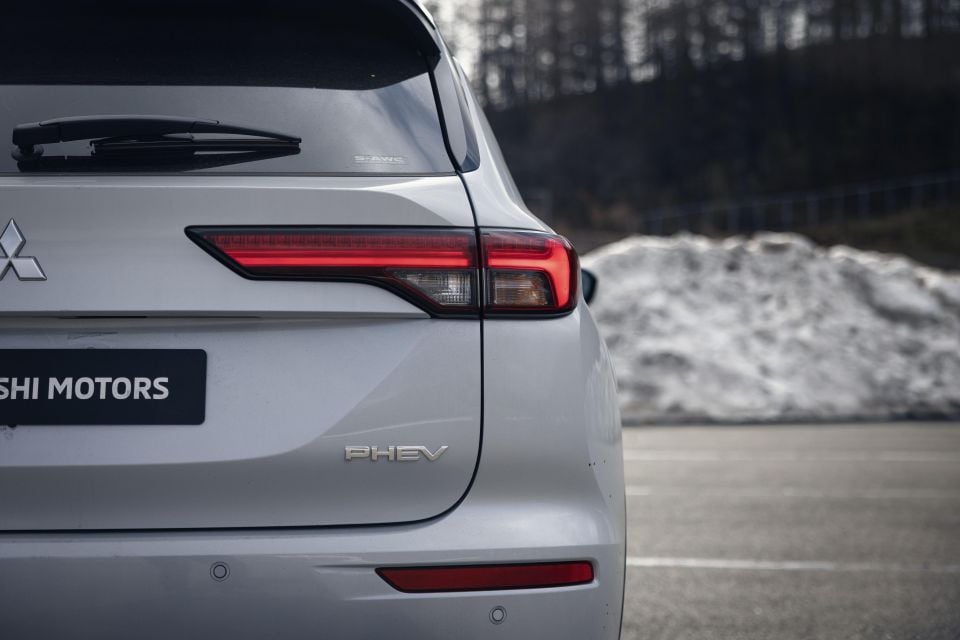
2023 Mitsubishi Outlander PHEV pricing:
Prices exclude on-road costs
Buy your new car without the stress. It's fast, simple and completely free.

Great service from Travis and team, second time I have used this business would not hesitate to recommend them to anyone
Craig C.
Purchased a Ford Ranger in Sunshine Coast, QLD
CarExpert helped Craig save thousands on his Ford Ranger, now let us save you on your next new car.
Find a dealOur drive was of a range of different Outlanders, from scruffy development mules through to vehicles destined for Australia. These interior impressions are based on previous Outlander drives.

The new Outlander is a much more grown up beast than its predecessor behind the wheel and, in PHEV guise, comes with a pretty generous range of standard inclusions.
The fundamentals are good up front. The power-adjusted driver’s seat is supportive, and the driving position is more accomodating than was the case in the last Outlander.
With its leather trim and silver highlights, the steering wheel feels like a quality item; the same can’t be said for the brittle indicator stalks.
Suede-effect seat trim in the Aspire, and full leather trim with quilting in the Exceed Tourer are on hand to help elevate high-end models. The base ES features cloth trim and, disappointingly, a urethane steering wheel.
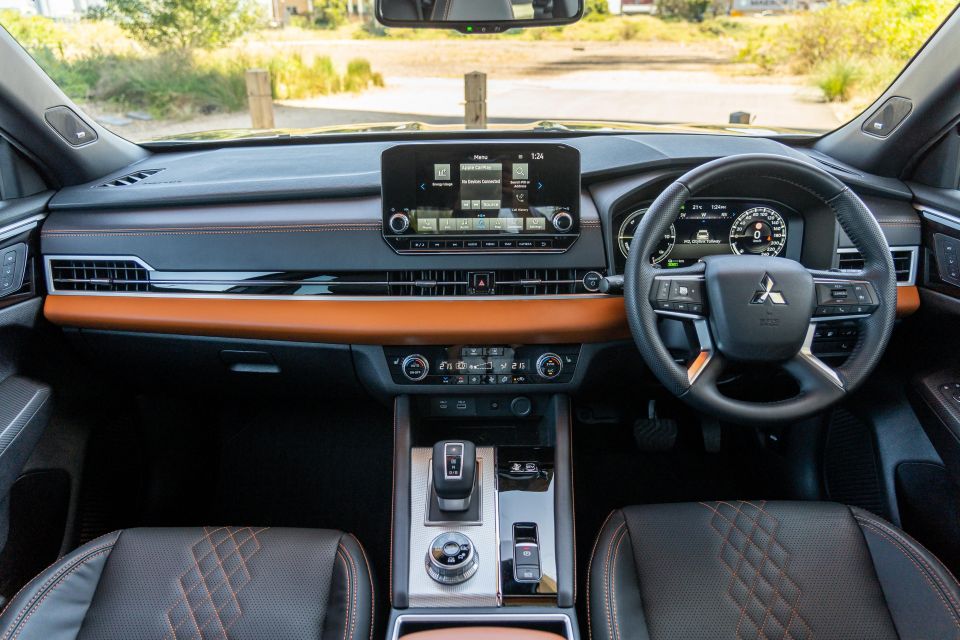
Being one of the newer models in the class, it would be reasonable to expect the Outlander to be a technology standard-setter. In reality, it offers a full feature set but doesn’t look or feel particularly up-to-date.
Its graphics are blocky and basic, and it’s already laggy at times. Wireless Apple CarPlay is its saving grace, allowing you to sidestep the factory software without removing your iPhone from your pocket. Android users still need to plug in, however.
It’s a bit disappointing Mitsubishi didn’t do more to move the game forward, because a big screen isn’t enough to stand out in 2022.
The digital instrument pod is better than the basic-looking analogue dials offered on lower-end cars, and has a decent range of layout options for owners keen to customise their cars, but it’s not a match for what’s on offer in Volkswagen Group products.
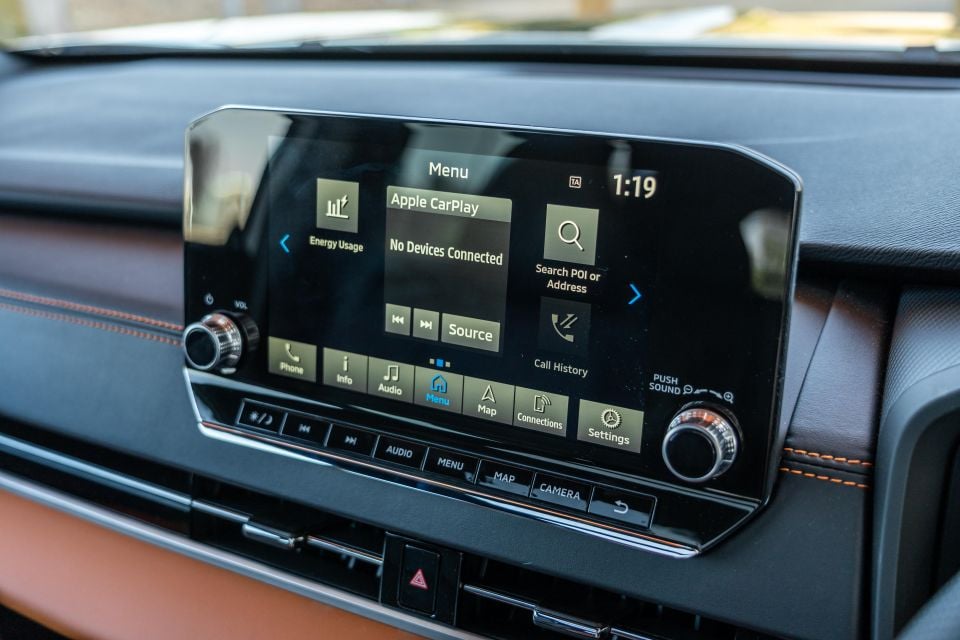

At least Mitsubishi hasn’t abandoned proper climate controls, so you don’t need to go digging into the touchscreen to adjust your temperature and fan speed.
There’s plenty of storage up front, from the dual cupholders to the wireless charge pad at the base of the dashboard.
The door pockets will happily swallow a water bottle, and there’s plenty of space for road trip snacks in the underarm storage bin.
The Outlander’s chunky exterior dimensions mean there’s solid legroom in the second row. You’ll fit full-sized adults behind full-sized adults, and the bench is broad enough to accomodate three teenagers without too much stress.


Legroom with the rear seats in place is slightly above average for the class.
The stadium-style second-row bench means vision is good for small kids, but it also means long-legged passengers will feel as if their knees are butting into the top of the seat.
You get air vents back there, and the centre seat back folds down to create an armrest. Unfortunately when you fold it there’s nothing stopping bags from the boot sliding into the cabin. Most rivals feature fold-down armrests without forcing you to make the same compromises.
Rear-seat passengers get air vents and two USB ports, but no temperature controls.
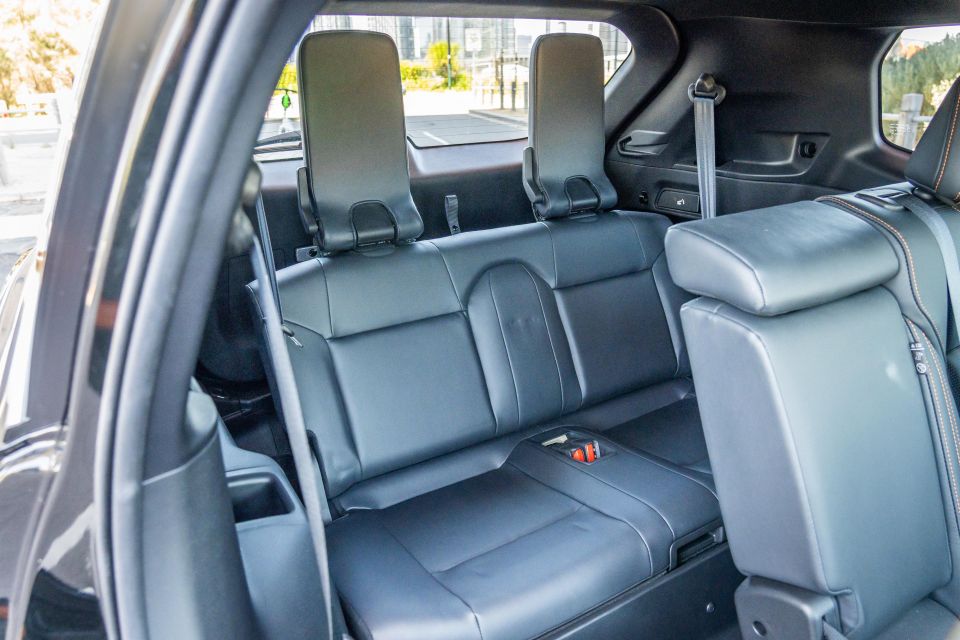
Access to the third row is tight, despite the second-row bench sliding and tilting forwards. Once there, headroom is quite disappointing, and legroom is tighter than in rivals like the Volkswagen Tiguan Allspace.
Third-row passengers don’t get air vents, although they do get a single cupholder cut into the plastic moulding over the wheel arches.
It’s also worth noting how small the rear window is relative to its rivals – it’s like a porthole.
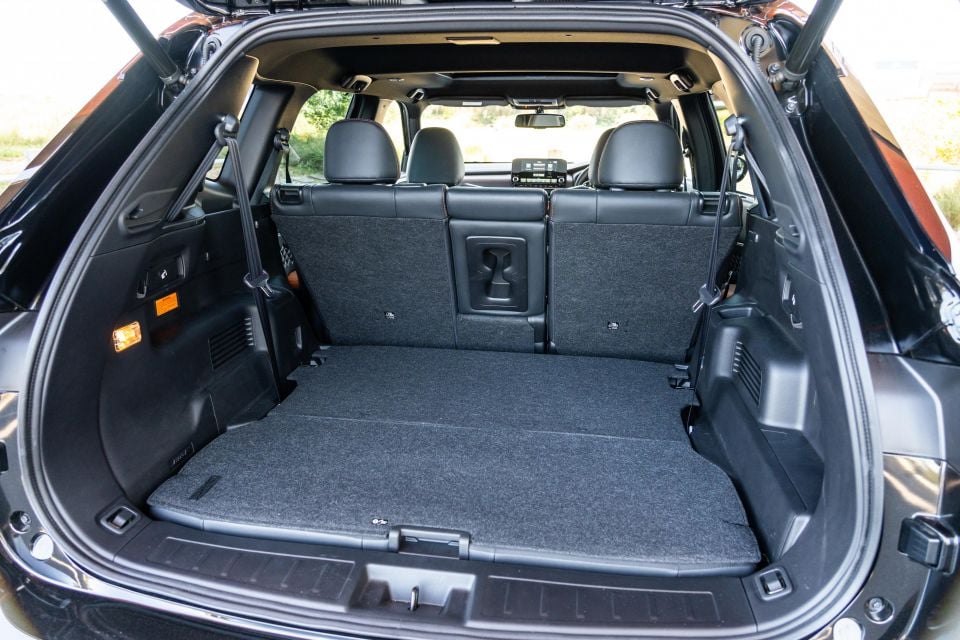

There’s a claimed 163L of boot space with the third-row seats in place, expanding to 478L with them folded.
That expands again to 1461L with them folded. The floor is perfectly flat, and there are no awkward steps or holes back there.
Power in the Outlander PHEV comes from the combination of a 2.4-litre petrol engine running the leaner, more efficient Atkinson Cycle, and a pair of electric motors.

Alone, the petrol engine produces 98kW of power. It’s mated with an electric motor on each axle, for combined system outputs of 185kW of power and 450Nm of torque.
The electric motors are hooked up to a 20.0kWh lithium-ion battery pack. The powertrain is hooked up to a single-speed transaxle, and the Outlander PHEV is all wheel drive.
It’s capable of running in electric-only mode, or a range of hybrid modes where the petrol engine and motors combine to deliver more performance. The petrol engine can also be used to recharge the battery pack if you aren’t able to plug into a wall socket.
First test off the rank was a muddy off-road course. We put the petrol-powered Outlander through its paces and found it reasonably capable in our off-road mega test, but we haven’t done the same tests in the PHEV.
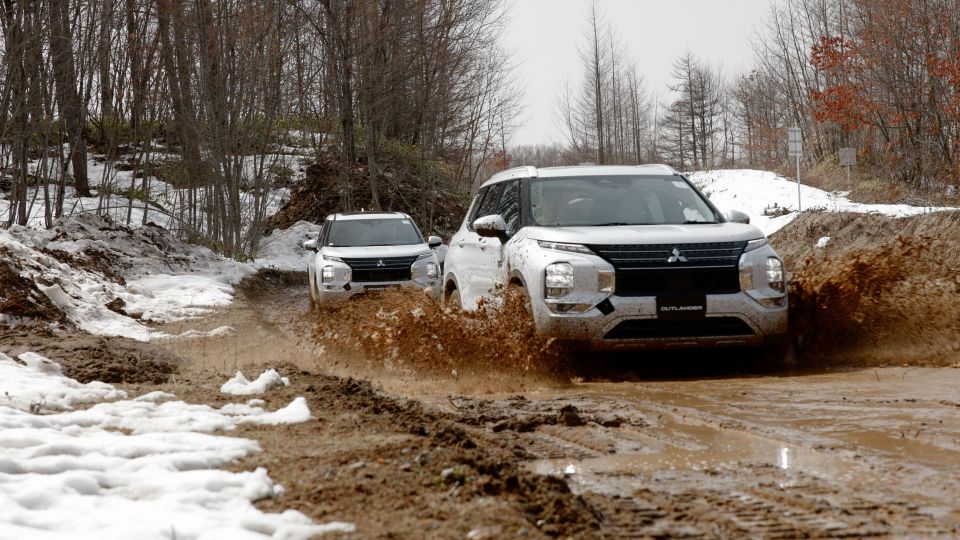
Our course was a track winding along a hillside with lean angle banks, a rocky section, some downhill moguls, and plenty of muddy bits.
With snow melting on Hokkaido at the moment, our Mitsubishi minders said conditions were bad and “stuck is possible” – a sighting lap in a Pajero had us worried the Outlander would need a tow. Turns out we were worried for nothing.
With the drive selector in Mud mode, the Outlander defaults to electric power. It’s capable of actively shuffling torque between the individual wheels on each axle in e-mode, essentially allowing the car to send more grunt to the wheel with the most grip.
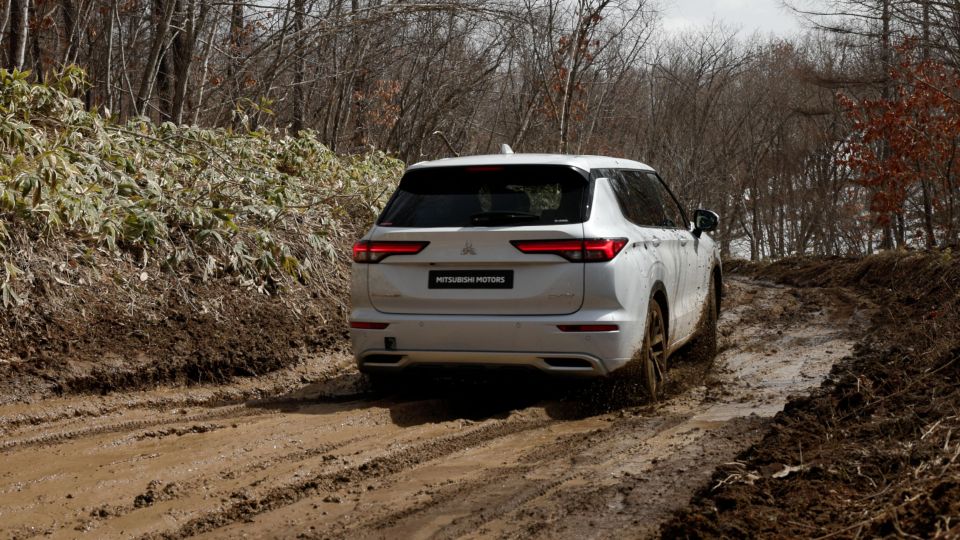
Where expert car reviews meet expert car buying – CarExpert gives you trusted advice, personalised service and real savings on your next new car.
Even on stock summer tyres, it never really felt like getting stuck. You can feel the electric motors pulsing at times, putting torque to the wheels and then, as they spin, cutting it. The traction control system is very active, but it’s on hand to help keep the car moving rather than bringing things to a grinding halt.
On summer tyres, the petrol engine only fired once in a particularly boggy patch, where the only way to get through was with plenty of throttle. On chunkier winter tyres, it’s electric-only.
The Outlander isn’t an off-roader, with its poor approach and departure angles, low ground clearance, and eminently scrape-able trim bits, but it’s impressive to see what smart motor controllers can do in slippery situations.
Next up was a motorkhana on a skid pan. With cones creating a mix of low-speed slalom and higher-speed corners, we worked through the drive modes to explore the difference in how the electric motor on the rear axle affects handling.
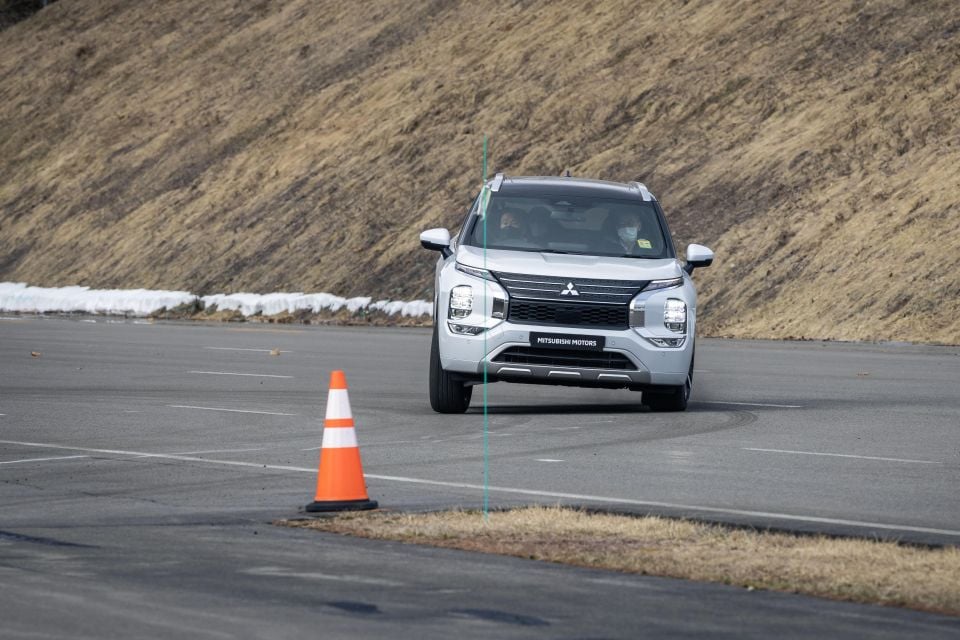
There’s a noticeable difference between Normal and Tarmac modes, with the latter more aggressively sending torque to the outside rear wheel to help the car turn in.
It’s still a two-tonne SUV, not a Lancer Evolution, but there is a difference in how the car handles with the e-motor more aggressively shuffling torque to the outside rear wheel, and the brake-based torque vectoring more aggressively braking the inside rear wheel to make the Outlander turn.
The same distinction is evident on a handling course. Will the average owner ever push their Outlander PHEV as hard as we did? Probably not, but it’s interesting to see the potential that could be unlocked by a Ralliart model with more grunt, and a more focused chassis setup.
Finally, we were let loose on a gravel circuit in a development Outlander PHEV with more than 400,000km on the odometer to compare Tarmac and Gravel modes.
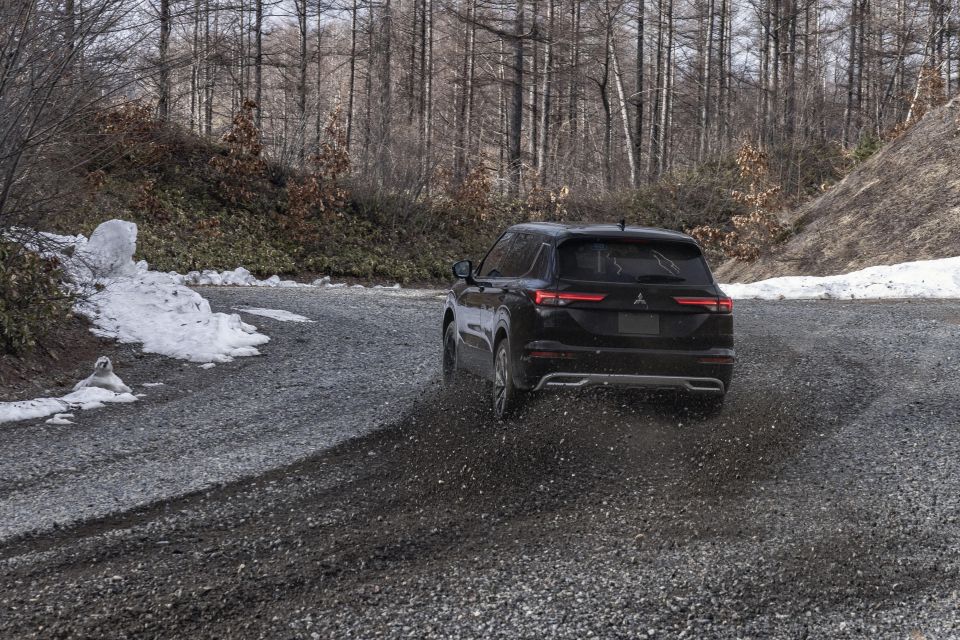
With loose suspension, interior parts never meant for public consumption, and a battered exterior, the mule had plenty of character. It also was more than happy to slide when provoked, holding the sort of all-wheel drive drifts Evolution owners know and love.
With stability control off, the way the PHEV drivetrain is set up feels distinctly rear-biased, and once the car is sideways you can keep it there with a helping of throttle. Adding some opposite lock straightens the car up nicely.
It’s clear there are talents within the Outlander PHEV’s powertrain and chassis that most owners will never tap into. It’ll be interesting to see where Ralliart can take the technology moving forward, if it’s given the licence to do so.
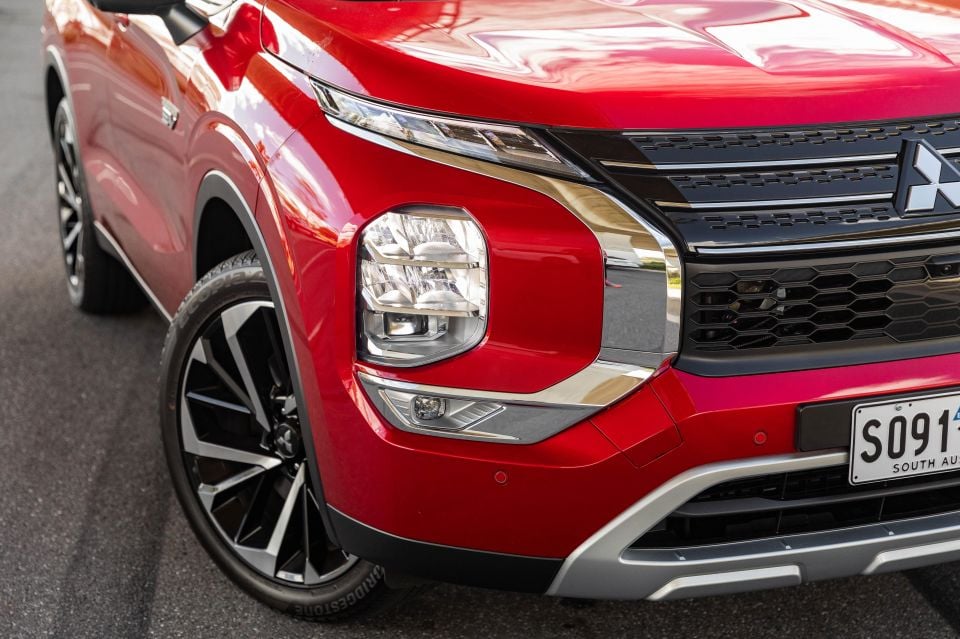
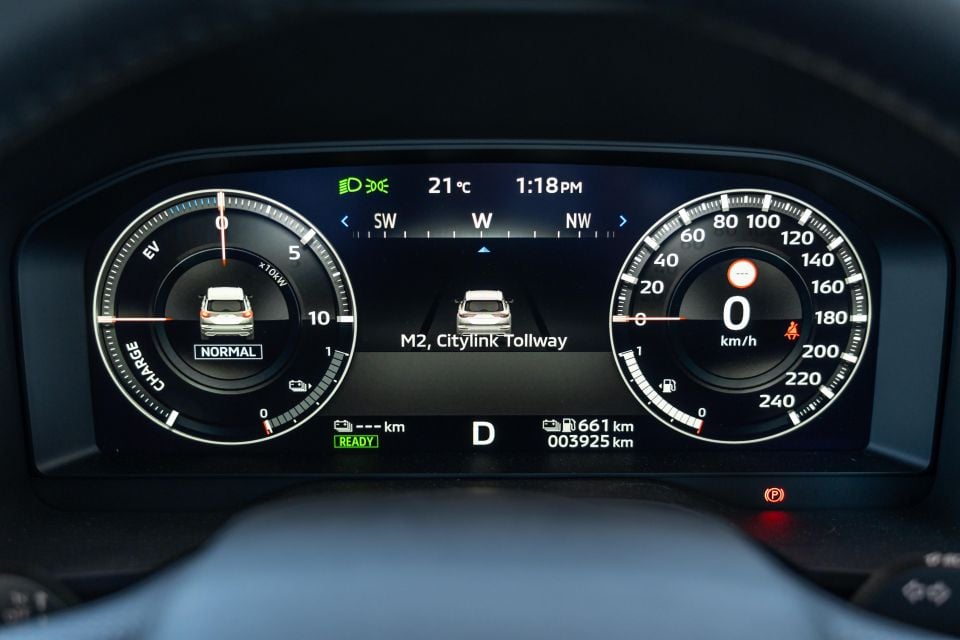
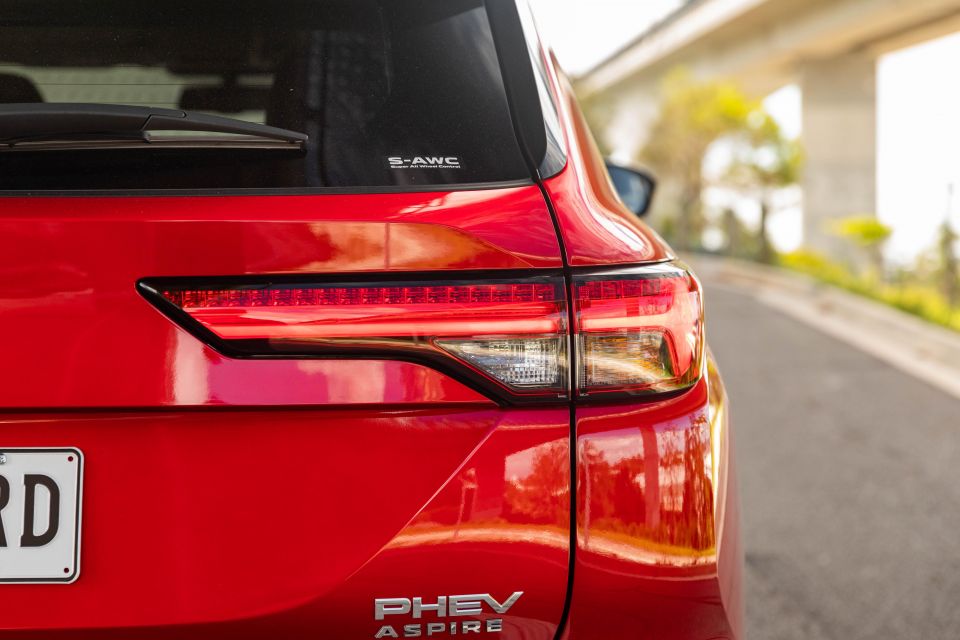
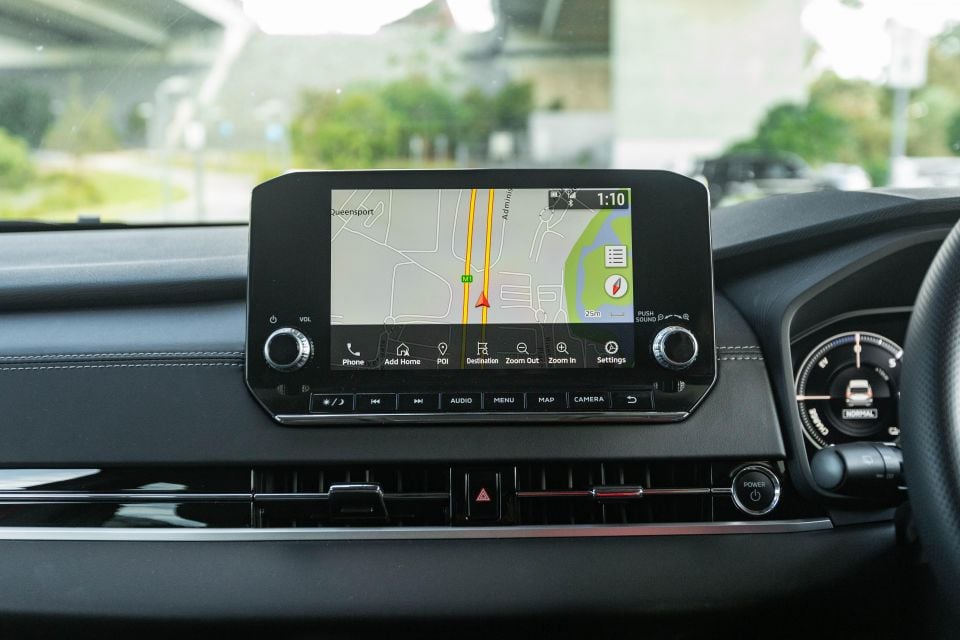
Outlander PHEV ES highlights:
Outlander PHEV Aspire (as tested) adds:

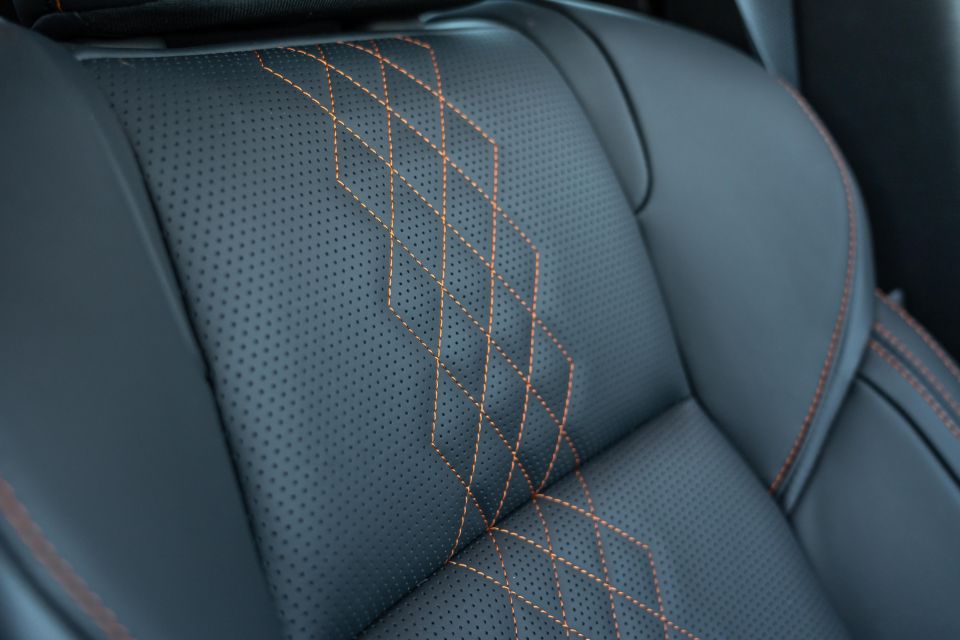
Outlander PHEV Exceed gains:
Outlander PHEV Exceed Tourer adds:
The Mitsubishi Outlander and Outlander PHEV have a five-star ANCAP safety rating based on 2022 tests.
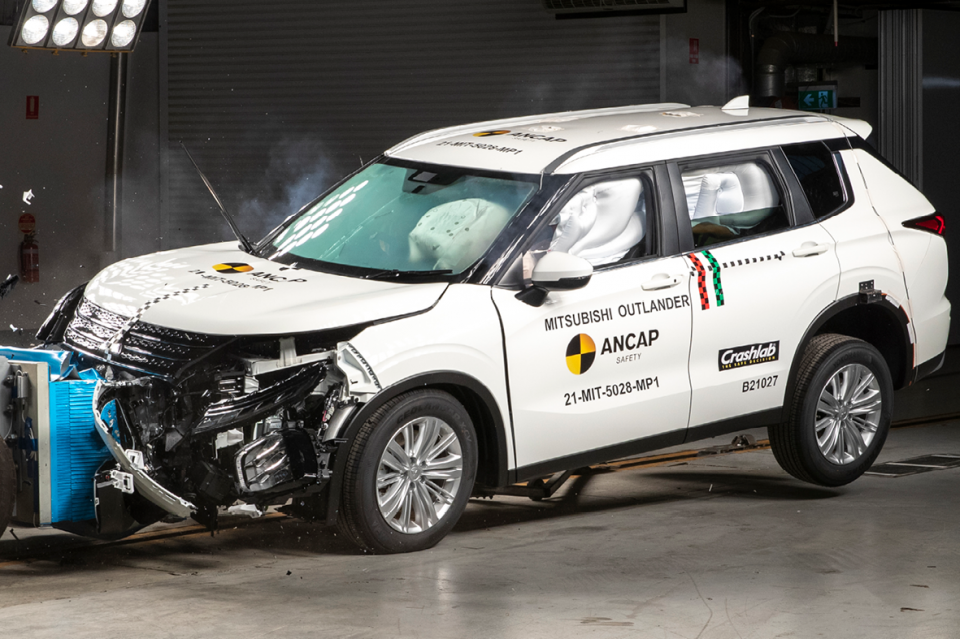
The Outlander received an adult occupant protection rating of 83 per cent, a child occupant protection rating of 92 per cent, a vulnerable road user protection rating of 81 per cent, and a safety assist rating of 83 per cent.
Standard safety features include:
Further up the range, the Outlander Exceed and Exceed Tourer petrol and PHEV models pick up Mitsubishi’s new MI-PILOT driving assistant.
This adds Traffic Jam Assist (adaptive cruise control that re-engages after a complete stop), Lane Keep Assist (using steering control assistance rather than wheel braking), and Speed Limit Assistance (adaptive cruise control that matches the Outlander to the indicated speed limit).
The steering wheel in these grades will now feature touch sensors to handle MI-PILOT engagement, and disengages the system when the driver is not detected, turn signals are on, or when windscreen wipers are continuously operated at their highest speed.
The Outlander PHEV is covered by a five-year, 100,000km warranty; though this is increased to 10 years/200,000km if you service within the Mitsubishi dealership network.
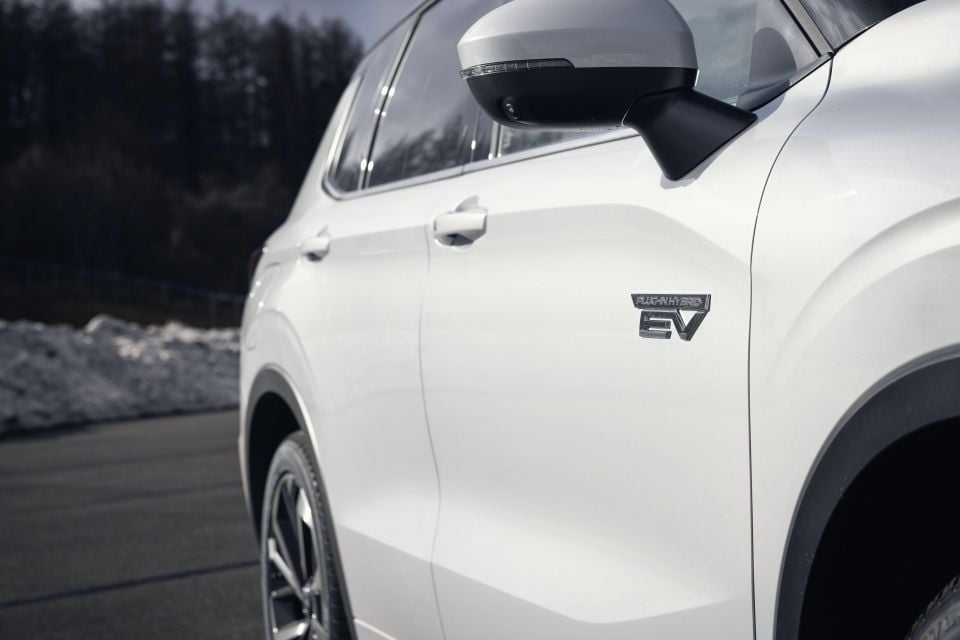
The high-voltage battery is covered by an eight-year, 160,000km warranty.
Mitsubishi offers 10 years of capped-price servicing, with intervals of 12 months or 15,000km. Each service costs $299 except for the sixth, eighth and 10th, which cost $599, $599 and $799, respectively.
We’ve already experienced the Outlander PHEV in the real world, and discovered it’s a capable family SUV with a usable electric range… provided you’re committed to charging it, of course.
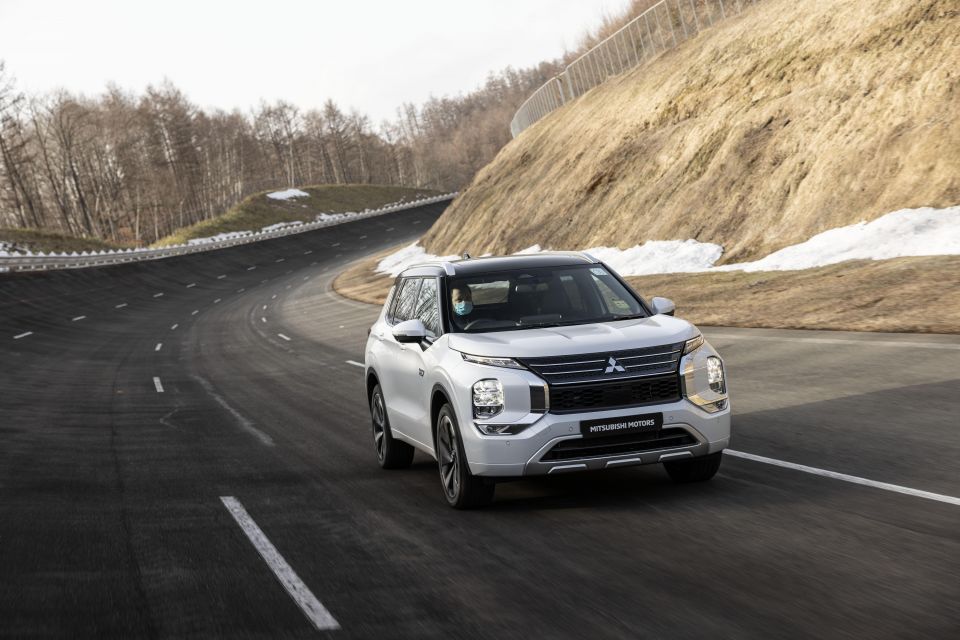
In the more extreme environment that is the Tokachi Proving Ground, it showed there’s a range of talents lurking beneath the skin most owners won’t ever tap into.
Our tests were set up by Mitsubishi to demonstrate specific aspects of the Outlander PHEV’s skill set, so it shouldn’t come as a surprise to see the car came out looking good.
There’s slightly more to take away from our drive than that, though.
As Mitsubishi looks to own plug-in hybrid technology going forward, it’s clear there’s potential for the technology to unlock more performance from Ralliart cars going forward if the brand is willing to invest.
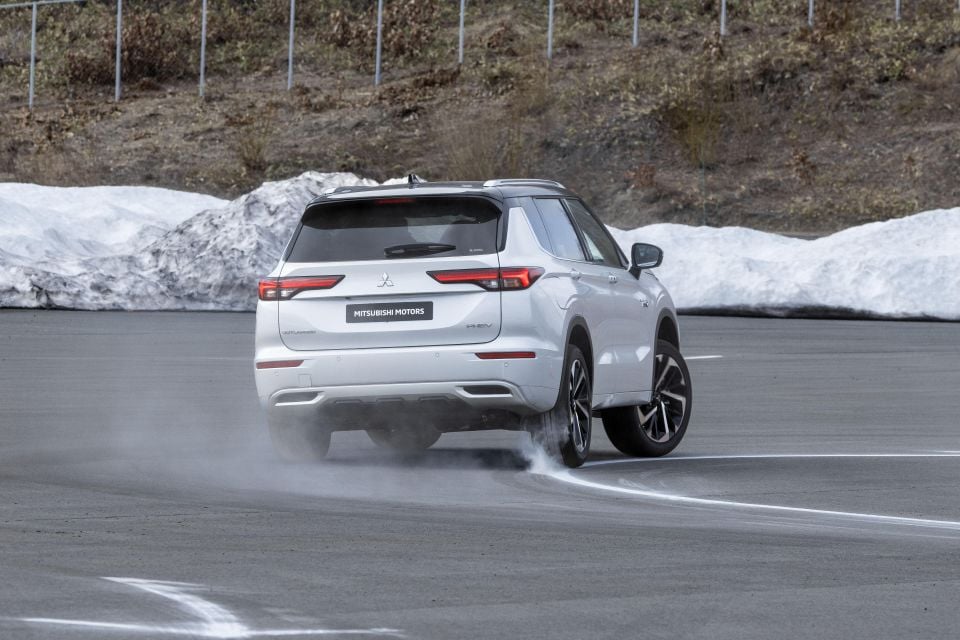
Click the images for the full gallery
Where expert car reviews meet expert car buying – CarExpert gives you trusted advice, personalised service and real savings on your next new car.
Scott Collie is an automotive journalist based in Melbourne, Australia. Scott studied journalism at RMIT University and, after a lifelong obsession with everything automotive, started covering the car industry shortly afterwards. He has a passion for travel, and is an avid Melbourne Demons supporter.


Josh Nevett
3 Days Ago


Josh Nevett
5 Days Ago
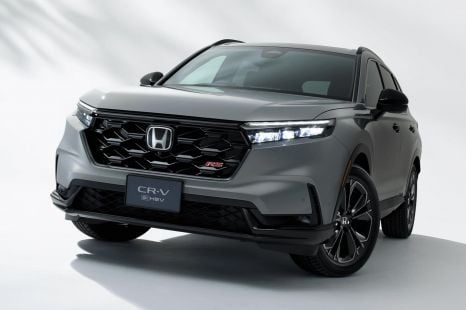

James Wong
7 Days Ago


Derek Fung
7 Days Ago


CarExpert.com.au
9 Days Ago
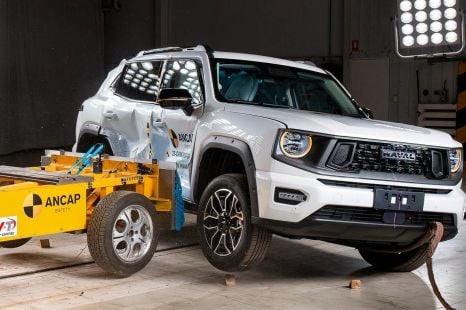

James Wong
9 Days Ago